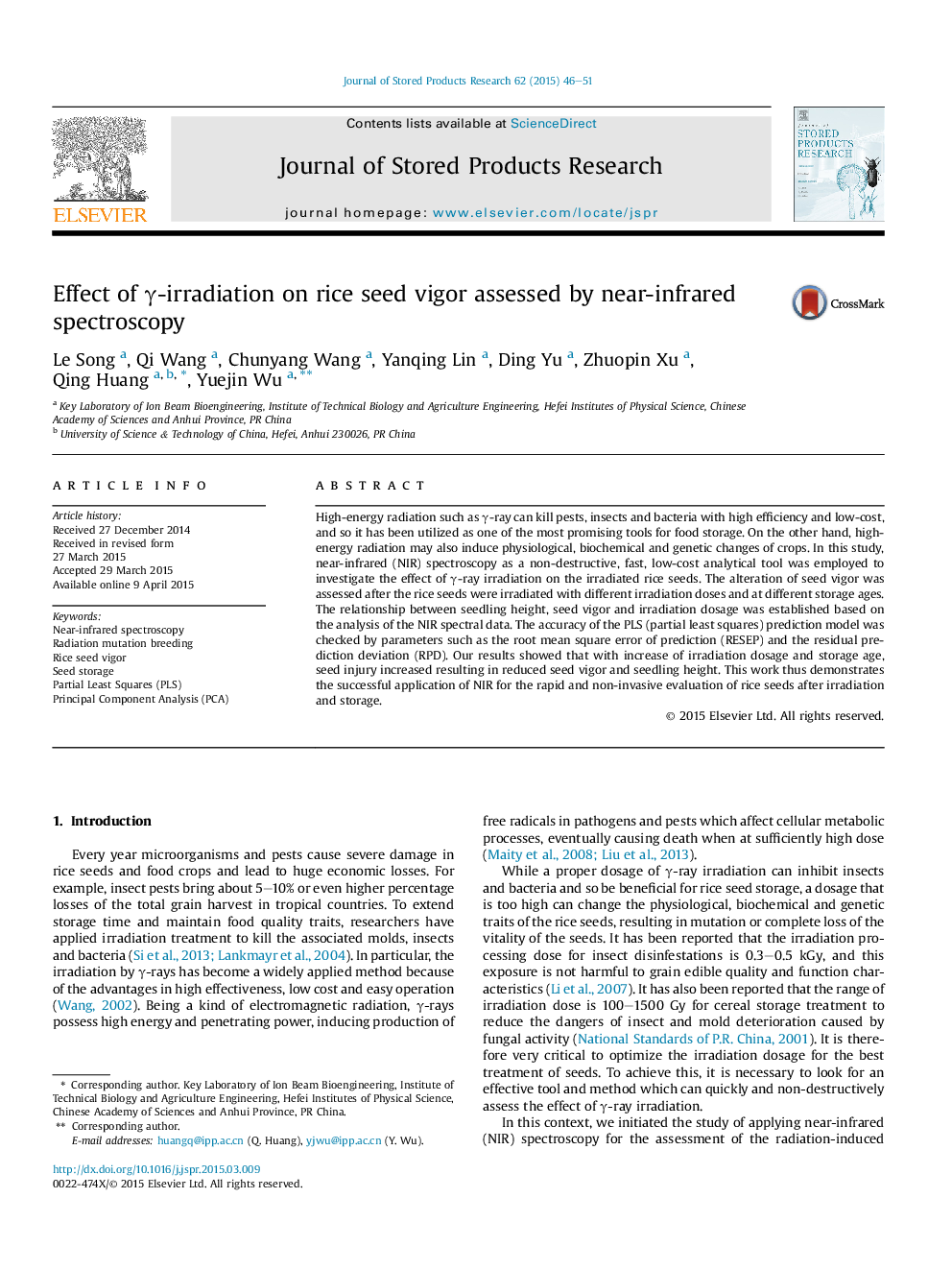| Article ID | Journal | Published Year | Pages | File Type |
|---|---|---|---|---|
| 4517049 | Journal of Stored Products Research | 2015 | 6 Pages |
•Near-infrared (NIR) spectroscopy was employed in the evaluation of γ-ray irradiation effects on rice seeds.•Relationship between seedling height, seed vigor and irradiation dosage was established based on the analysis of the NIR data.•The seed injury increased with irradiation dosage and storage age.•The single seed vigor index (SSVI) of the irradiated rice seeds could be assessed under the PLS prediction model.•The threshold dosage was identified to facilitate the determination of the optimal irradiation dosage as a function of storage time.
High-energy radiation such as γ-ray can kill pests, insects and bacteria with high efficiency and low-cost, and so it has been utilized as one of the most promising tools for food storage. On the other hand, high-energy radiation may also induce physiological, biochemical and genetic changes of crops. In this study, near-infrared (NIR) spectroscopy as a non-destructive, fast, low-cost analytical tool was employed to investigate the effect of γ-ray irradiation on the irradiated rice seeds. The alteration of seed vigor was assessed after the rice seeds were irradiated with different irradiation doses and at different storage ages. The relationship between seedling height, seed vigor and irradiation dosage was established based on the analysis of the NIR spectral data. The accuracy of the PLS (partial least squares) prediction model was checked by parameters such as the root mean square error of prediction (RESEP) and the residual prediction deviation (RPD). Our results showed that with increase of irradiation dosage and storage age, seed injury increased resulting in reduced seed vigor and seedling height. This work thus demonstrates the successful application of NIR for the rapid and non-invasive evaluation of rice seeds after irradiation and storage.
Graphical abstractFigure optionsDownload full-size imageDownload as PowerPoint slide
